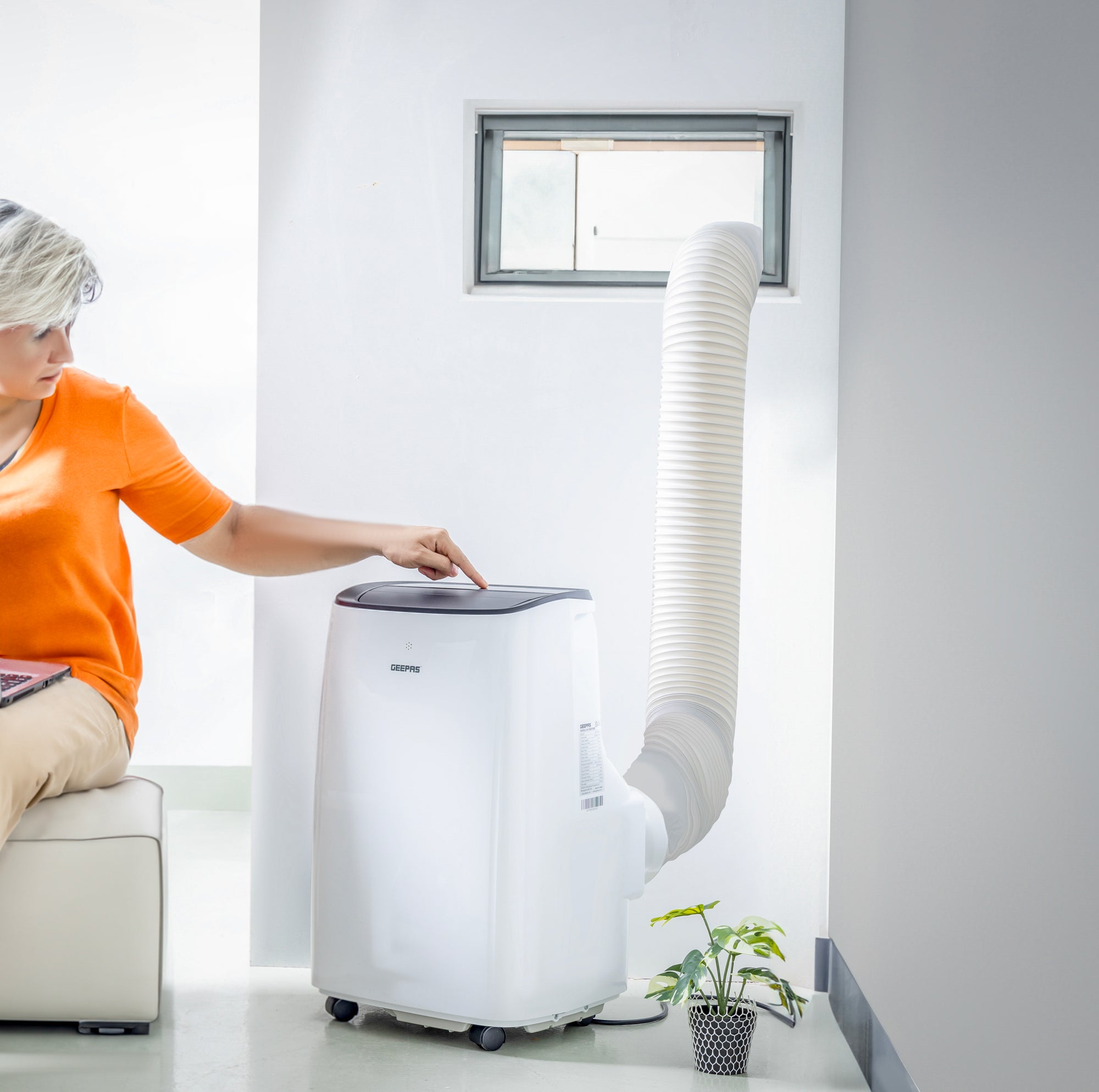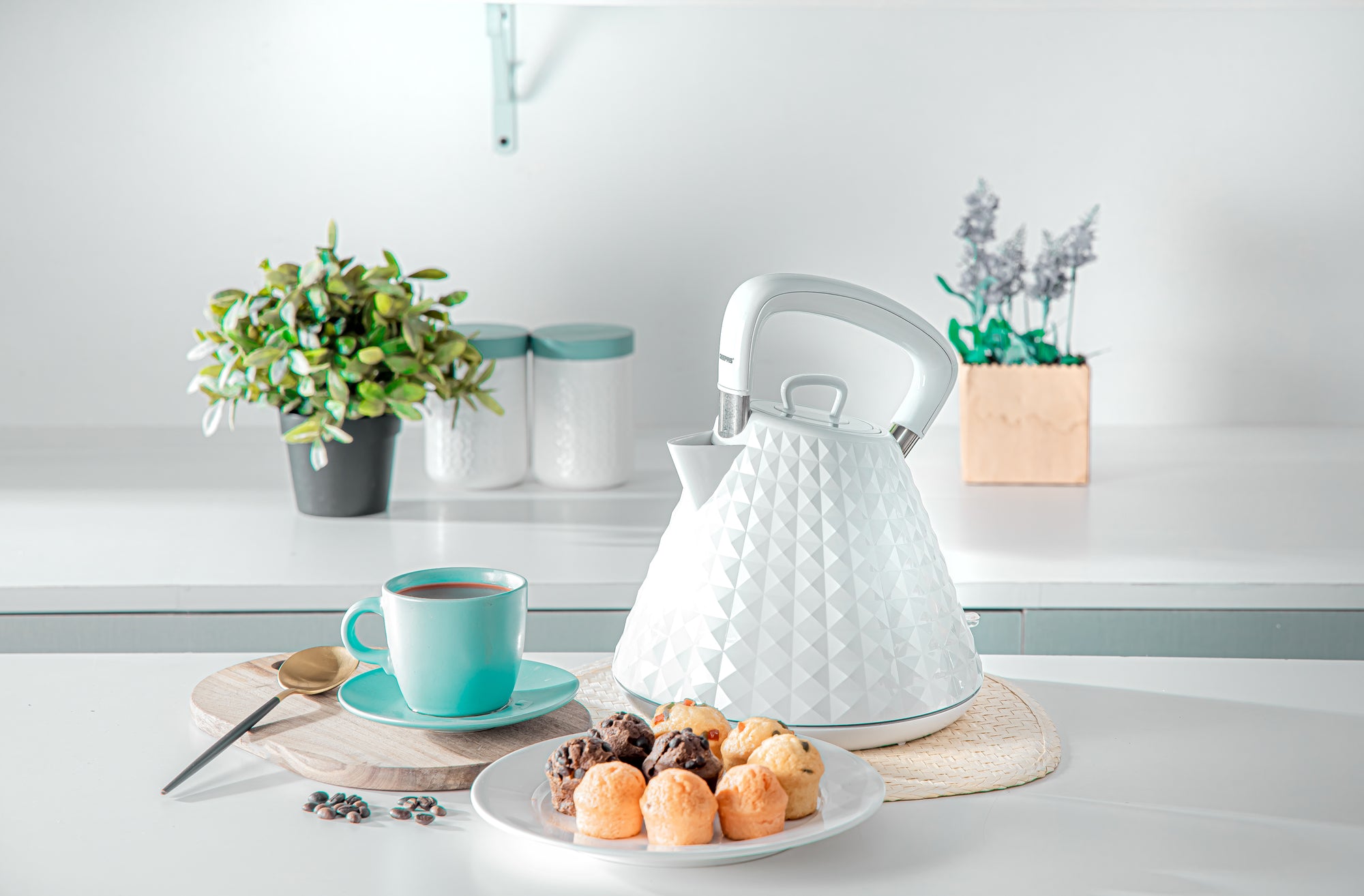Portable air conditioning refers to the compact cooling devices designed to provide localized cooling in various environments. In most cases this would be smaller air conditioning units that do not have to be installed and would be used in houses, offices, cafes and other similar places.
Understanding how these units work is essential for optimizing their performance and ensuring comfort during hot weather. In this article, we will explore the inner workings of portable air conditioning units, covering their key components, refrigeration cycle, operating principles, and both benefits and limitations.

Components of Portable Air Conditioning
Compressor - The compressor plays a crucial role in the cooling process of a portable air conditioner. It is responsible for compressing the refrigerant, increasing its pressure and temperature. By compressing the refrigerant, the compressor facilitates the transfer of heat from the indoor air to the outdoor environment. Portable air conditioners typically utilize reciprocating, rotary, or scroll compressors, each with its own advantages in terms of efficiency and noise levels.
Condenser - The condenser is where the refrigerant undergoes heat dissipation. As the compressed refrigerant flows through the condenser coil, it releases heat to the surrounding air, causing it to cool down. Proper maintenance and cleaning of the condenser are essential to ensure efficient heat exchange and prevent blockages that can hinder performance.
Evaporator - The evaporator is responsible for cooling the air before it is released back into the room. Inside the evaporator coil, the refrigerant expands, rapidly absorbing heat from the air. This process cools the air and lowers its temperature, creating a comfortable indoor environment. The cooled air is then circulated back into the room while the refrigerant continues its cycle.
Refrigeration Cycle - The refrigeration cycle is the fundamental process that portable air conditioners use to cool the air. It consists of four main stages: compression, condensation, expansion, and evaporation. As the refrigerant flows through the system, it alternates between liquid and gas states, absorbing and releasing heat along the way.
Refrigerants - Refrigerants are the substances used to transfer heat within the air conditioning system. Common refrigerants include hydrofluorocarbons (HFCs) and hydrochlorofluorocarbons (HCFCs). However, due to environmental concerns regarding their contribution to global warming and ozone depletion, there is a growing shift towards more environmentally friendly refrigerants such as hydrofluoroolefins (HFOs) and natural refrigerants like propane and ammonia.
Maintaining and The Upkeeping Of Your Portable Air Conditioning
Air circulation & Filtration - Efficient air circulation and filtration are essential for maintaining air quality and distributing cool air evenly throughout the space. Portable air conditioners are designed with well-placed air intake and exhaust systems, allowing for proper circulation.
Additionally, these units are equipped with filters that trap dust, allergens, and pollutants, ensuring cleaner air. Filtration of air is also beneficial for people with asthma and air borne allergies, improving the air quality of the room you are in, ensuring the effects are minimal.
Thermostat & Temperature Control - Portable air conditioners incorporate a thermostat that enables users to set and maintain their desired temperature and strength of cooling. The thermostat constantly monitors the room temperature and adjusts the cooling output accordingly. By setting the appropriate temperature, users can achieve optimal comfort and energy efficiency.

Benefits and Limitations of Portable Air Conditioning:
Advantages of portability and flexibility
One of the significant advantages of portable air conditioning units is their mobility. Unlike fixed or central air conditioning systems, portable units can be easily moved from room to room or even taken on-the-go. They offer a practical solution for cooling specific areas or spaces that do not have central air conditioning. Additionally, portable AC units are ideal for temporary living situations, such as rented apartments or offices.
Limitations and considerations for usage
While portable air conditioners offer convenience, there are a few limitations to consider. First, the cooling capacity of these units is generally suitable for smaller spaces, so they may not adequately cool larger rooms. It is crucial to match the cooling capacity of the unit to the size of the room for optimal performance. Additionally, energy efficiency can vary among portable air conditioners, and users should pay attention to power consumption to avoid excessive energy usage.

Understanding how portable air conditioning works allows users to make informed decisions when selecting and operating these units. By grasping the components, refrigeration cycle, operating principles, and the benefits and limitations of portable air conditioning, users can maximize comfort while minimizing energy consumption. Whether cooling a small room, a temporary space, or providing comfort on-the-go, portable air conditioners offer a flexible and efficient cooling solution in various environments. With this knowledge, you can now make the most of portable air conditioning units and beat the heat with ease.





1 comment
Adi
Penjelasan mudah dipahami dan sangat detail
Penjelasan mudah dipahami dan sangat detail